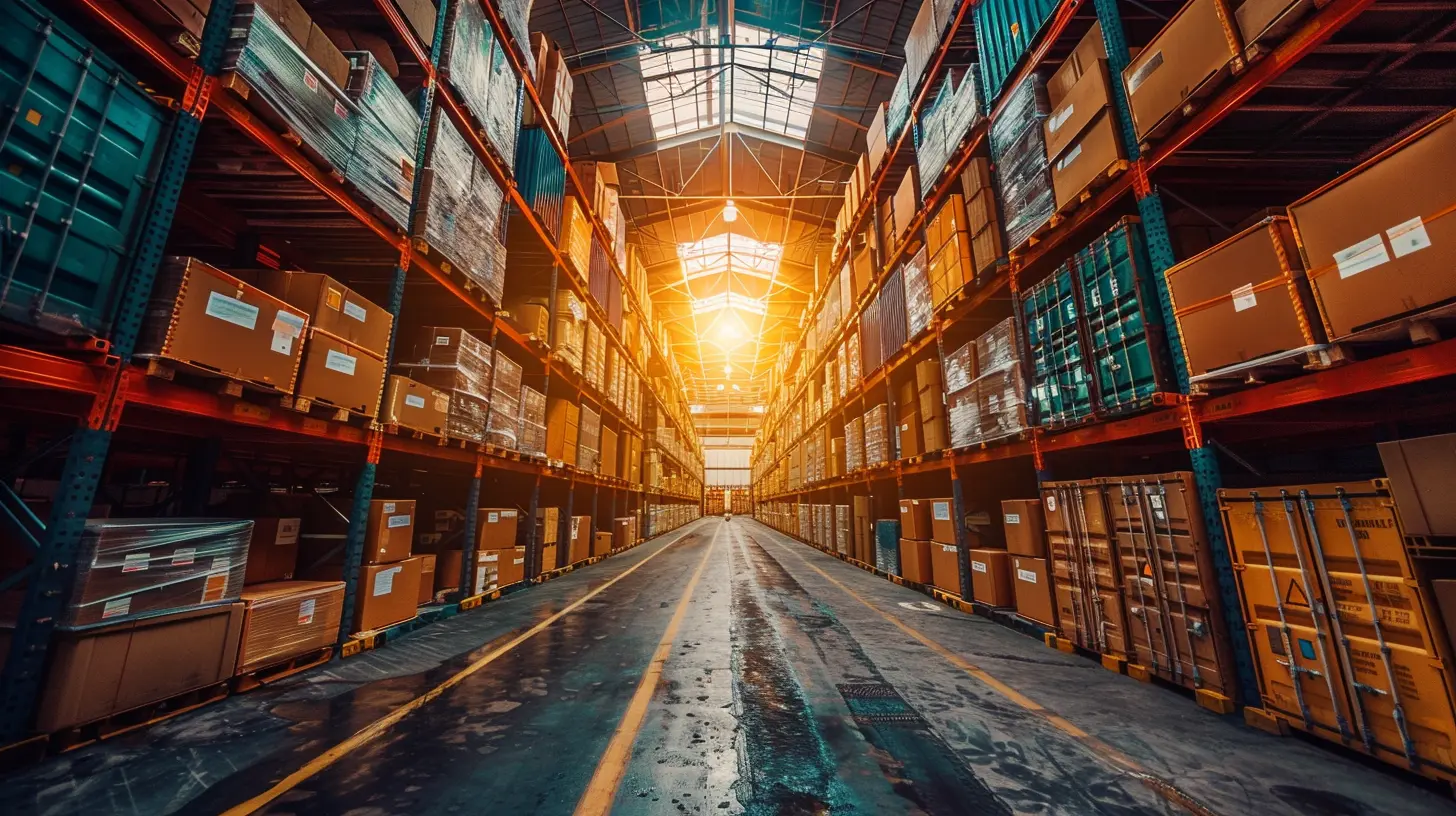Why Reshoring Is Becoming a Top Corporate Strategy
22 November 2025
In the past few decades, companies have been on an offshoring spree—chasing lower labor costs and cheaper materials across the globe. But times are changing. Fast forward to today, and we’re seeing a reversal of that trend. Businesses are bringing their operations back home. This shift is called "reshoring," and it's quickly becoming a top corporate strategy for companies looking to survive and thrive in an unpredictable world.
But what’s behind this massive pivot? Why are companies willing to pay more to move their operations back to their home country? Grab a coffee, and let's unpack this. Because honestly, the reasons might surprise you.
What Is Reshoring, Anyway?
Let’s keep it simple. Reshoring means bringing manufacturing and other business operations back to the company’s home country from overseas. It's the opposite of offshoring, where businesses used to move jobs and production to countries with lower costs—like China, India, or Mexico.Think of it like this: companies went abroad to save money. Now they're coming home to save their future.
The Wake-Up Call: A Global Reality Check
For years, offshoring seemed like a no-brainer. Cheaper labor, lower production costs—it was a CFO’s dream. But then reality struck.Supply Chain Nightmares
Remember what happened during the pandemic? Shelves were empty, shipping times were insane, and companies couldn’t get critical components. The global supply chain buckled under pressure. Suddenly, the cheap option started looking very expensive.Add to that: shipping delays, container shortages, port bottlenecks—it was a mess. Businesses couldn’t meet demand, and customers weren’t forgiving.
Rising Labor Costs Overseas
Labor isn’t as cheap as it used to be… even in traditionally low-cost countries. Wages have been going up in China and Southeast Asia. And with higher wages come thinner margins. That big cost advantage companies once had? It’s shrinking fast.Geopolitical Tensions
Let’s face it—global politics are a minefield right now. U.S.-China trade tensions, tariffs, sanctions—these things can completely derail business plans. Companies that rely on foreign manufacturing are constantly playing defense.Who wants their operations to depend on global diplomacy? Not a great backup plan.
Why Companies Are Betting Big on Reshoring
Now that we’ve looked at the untamed chaos that triggered this shift, let’s talk about the real reasons companies are reshoring—and why this might be the smartest move they’ve made in decades.1. More Control, Less Risk
When your manufacturing is local, you’re not at the mercy of global disruptions. You can visit the plant, tweak operations in real-time, and fix problems before they snowball into disasters.It’s like trying to steer a ship—you want your hands on the wheel, not relying on someone half a world away.
2. Faster Turnaround Times
Let’s talk speed. In today’s "I want it now" economy, waiting 90 days for a shipment from overseas just doesn’t cut it. Customers expect fast delivery, and companies have to keep up.Reshoring shortens production and distribution time. You can respond to market trends quicker and avoid long lead times that leave your products sitting on a ship somewhere in the Pacific.
3. Improved Quality
Let’s be honest—quality control gets tricky when your factory is 8,000 miles away. When production is local, it's easier to monitor, audit, and maintain quality standards. No miscommunications. No costly re-dos.Quality over quantity is becoming the new gold standard. Businesses want products they can be proud of.
4. Boosting Brand Image
Consumers care where stuff is made. "Made in the USA" (or "Made in [Your Country]") carries weight. It builds trust and loyalty. It shows commitment to local jobs and economic development.Brands that reshore are seen as responsible, trustworthy, and patriotic—even futuristic. Because what's more forward-thinking than investing in your own backyard?
The Tech Factor: Automation Makes It Easier
Here's the secret sauce no one talks about—technology. Automation and AI are game-changers for domestic manufacturing.Yes, labor in the U.S. or Europe costs more. But robots don’t take lunch breaks. Smart factories can produce more with fewer people, making reshoring more affordable than ever before.
You don’t need an army of workers to compete anymore. Just the right tech and the right team.
Government Incentives Help Too
Governments are starting to encourage reshoring more aggressively. Tax breaks, grants, subsidies—you name it. Politicians love the idea of bringing jobs home (and let’s be real, it plays well in an election year).From the CHIPS Act in the U.S. to reshoring-friendly policies in Europe, companies have more support than ever to make the switch.
And when the government is footing part of the bill, why wouldn’t you come home?
Real-Life Examples: Who’s Actually Doing This?
This isn’t just some theoretical trend. Big names are already jumping on board.- Apple: They're shifting some iPhone production to the U.S. and investing in chip manufacturing stateside.
- General Motors: Investing billions in American plants to build electric vehicles.
- Intel: Putting billions into U.S.-based semiconductor facilities as part of a long-term reshoring strategy.
- Walmart: Committed to spending over $350 billion on products made, grown, or assembled in the U.S.
It's not just manufacturing giants. Small and mid-sized businesses are reshoring too—especially in industries like textiles, tools, and electronics.
Challenges? Yeah, They Exist
Now, let’s not sugarcoat it—reshoring isn’t a walk in the park.Higher Costs
Labor is more expensive. Real estate, utilities, and raw materials might cost more depending on where you relocate.But many companies are learning these costs are worth the trade-off for more stability and flexibility.
Skilled Labor Shortage
There’s another catch: we need the talent to operate these high-tech manufacturing facilities. That means investing in workforce training and reshaping how we think about vocational education.It’s like building a new home—you need more than just the materials; you need the people who know how to put it all together.
Future-Proofing the Business
If there’s one thing businesses learned in the last few years, it’s this: prepare for the unexpected.Reshoring is less about “saving money now” and more about “surviving long-term.” When your operations are stable, your supply chain is local, and you’ve got more control, you’re future-proofing your business.
It’s like building your house on solid ground instead of shifting sand.
Sustainability and Reshoring: A Match Made in Heaven
Let’s not forget the environmental angle. Shipping goods across the globe has a massive carbon footprint. By producing closer to home, companies reduce emissions and promote sustainable practices.Consumers love that—and investors do too. In fact, ESG (Environmental, Social, and Governance) metrics are becoming major players in investment decisions.
Reshoring helps businesses meet those green goals without compromising on performance.
How To Know If Reshoring Is Right for Your Business
Thinking about making the move? Here’s a quick gut-check:- Do you rely heavily on global suppliers?
- Are you experiencing quality control or delivery issues?
- Are customers asking for locally made products?
- Have your overseas costs been creeping up?
- Is supply chain flexibility a top priority?
If you answered “yes” to even a couple of those, it might be time to explore reshoring. It’s not just for the big corporations anymore—it’s an option that’s becoming more accessible across the board.
Wrapping It Up
Reshoring isn’t just a buzzword—it’s a strategic shift. One born from necessity, reinforced by technology, and driven by the desire for control, quality, and sustainability.While it might not be the cheapest route in the short term, it could be the smartest move for long-term success. More and more companies are realizing that bringing operations home isn’t about going backward—it’s about moving forward with confidence.
So, next time you hear someone say, “Made in [Your Country],” know that behind those three words is a business strategy that’s reshaping the global economy. One local factory at a time.
all images in this post were generated using AI tools
Category:
Economic TrendsAuthor:

Rosa Gilbert

